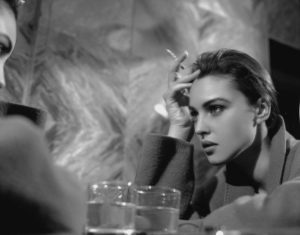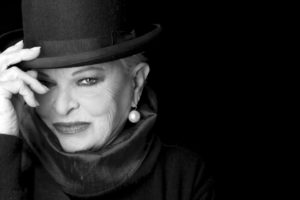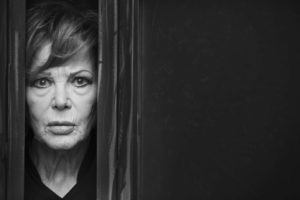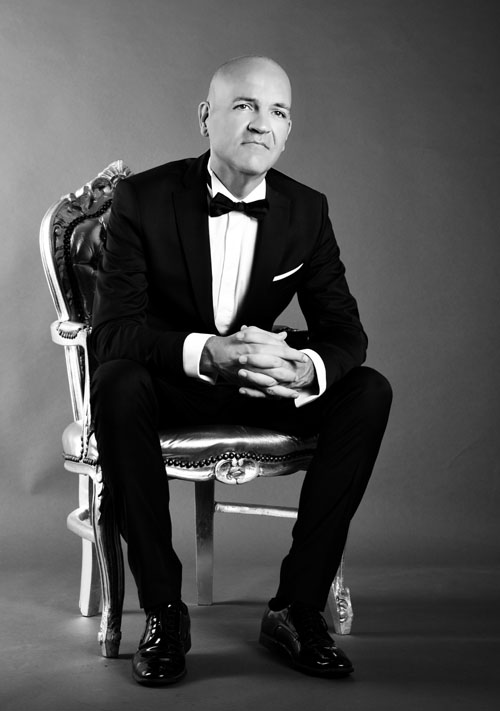Roberto Rocco, recently protagonist of the My Divas exhibition curated by Marco Eugenio Di Giandomenico during the 24th edition of Capri, Hollywood – The International Film Festival, interprets the divas of cinema in an original and compelling way, portraying them in eccentric poses, almost frames of films that flow in the imagination inducing the observer to new reflections that go beyond the so-called “society of the show”. The photographer rethinks a contemporary world that changes skin every day under the incessant bombardment of the unstoppable development of new technologies, without losing the romantic and winking gaze that belongs to those who were born in Beauty and will never forget it.
There is no easy shipwreck in fashion and lifestyle, which would contradict the artistic matrix of the photographed subjects, but the black and white transposition of imaginative visions, a sort of fascinating cinematographic dramaturgy where the faces and movements of timeless stars emerge from chiaroscuro at times disturbing, with tableau vivants that incredibly become almost natural sets of reportages, with a falsely random focus on the unmistakable looks, which also leak where the eyes are half-closed, as if the observer naturally replaced in his perception the image derived from many hit movies.
Roberto Rocco has always ridden cinema, or the seventh art according to the classification of Ricciotto Canudo in 1923 (who however forgets photography, at a time when photography still makes war with painting), since the dawn of his career in 1967 , when he assists Franco Zeffirelli in the filmmaking of “The Taming of the Shrew”, with Richard Burton and Elizabeth Taylor, based on the play by the same name by William Shakespeare, a film that establishes the link of the great Florentine director with Hollywood and at the same time introduces the young Rocco into the world of the great Beauty of cinema, from which he nourishes all his magnificent art to the present day.
Claudia Cardinale appears to us from an ajar door, it is not the classic face smiling and smoothed by make-up that we have been used to see in many magazines of the last sixty years, the skin is marked by wrinkles, the expression is almost interrogative. She has no complacency, it seems that from her wonderful and unrepeatable world of successes and life lived over the top, she suddenly overlooks contemporary reality, where she cannot find herself, and not so much for a personal fact, but as the Beauty that has characterized all her art and her existence seems dispersed in the current “society of transparency”, to use an expression dear to the Korean philosopher Byung-Chul Han, where everything runs out in a “like / don’t like”, in the digital madness of the internet mare magnum. Her dismay is a close relative of that “The Scream” by Edvard Munch who at the turn of the late nineteenth and early twentieth century denounces the profound pessimism of the time, in which the certainties of the human being are questioned, in a historical moment in which Sigmund Freud investigates the abysses of the unconscious.
Even Madonna appears from a half-open door, her attitude is seductive as always, unlike Claudia Cardinale she has masterfully ridden the digital reality and the new media, indeed she is an illustrious promoter, even if the dark place from which she overlooks does not leave foreshadowing anything good, she seems almost illuminated in the tunnel of her art-built world, in which “giving in to temptations” – to say it with Oscar Wilde – was the necessary way to express her immense talents, becoming an important piece of a contemporary world desperate for itself and its ancestral derivations.
What all the images have in common is that they seem to be taken from films. And so for Patty Pravo, Cameron Diaz, Claudia Gerini, Michela Ramazzotti, Asia Argento, Anna Galiena, Carol Alt, Francesca Dellera, Giuliana De Sio, Amy Irving, Valeria Golino, Sabrina Ferilli, Monica Bellucci, Lucia Bosè, Monica Guerritore, Madalina Diana Ghenea, Isabella Ferrari, Jacqueline Bisset, Liv Tyler, Theresa Russell, Francesca Archibugi.
The only exception for Lina Wertmuller and Lina Sastri, who pose as in a photo to be framed or autographed, even if the smile portrays Lina in her essence, recently back from the Career Oscar in Hollywood, with her always ironic and disenchanted attitude without ever taking herself seriously.
On 30 January 2020, the My Divas exhibition was presented as part of a specific event organized by the ARD & NT Institute (Academy of Fine Arts of Brera and Milan Polytechnic), in collaboration with the ETHICANDO Association of Milan, at the ex Church of San Carpoforo dell’Accademia di Brera, where, in addition to the curator and the artist, various personalities of culture intervened.
Marco Eugenio Di Giandomenico
(Critico dell’Arte Sostenibile)
 Roberto Rocco, Portrait of Monica Bellucci, 1988
Roberto Rocco, Portrait of Monica Bellucci, 1988
 Roberto Rocco, Portrait of Lucia Bosè, 2015
Roberto Rocco, Portrait of Lucia Bosè, 2015
 Roberto Rocco, Portrait of Madalina Diana Ghenea, 2010
Roberto Rocco, Portrait of Madalina Diana Ghenea, 2010
 Roberto Rocco, Portrait of Claudia Cardinale, 2016
Roberto Rocco, Portrait of Claudia Cardinale, 2016

Marco Eugenio Di Giandomenico is a writer, sustainable art critic, cultural economist, holder of prestigious academic positions at Italian and foreign universities and academies of fine arts including the Brera Academy of Fine Arts in Milan and the ARD & NT Institute (Brera Academy of Fine Arts and Milan Polytechnic), creator and curator of art exhibitions and cultural events in Italy and abroad. For his activities he has been honored with various prizes and awards, especially with reference to the theory of “sustainability of art”, of which he is recognized as one of the leading international supporters.






NO COMMENT